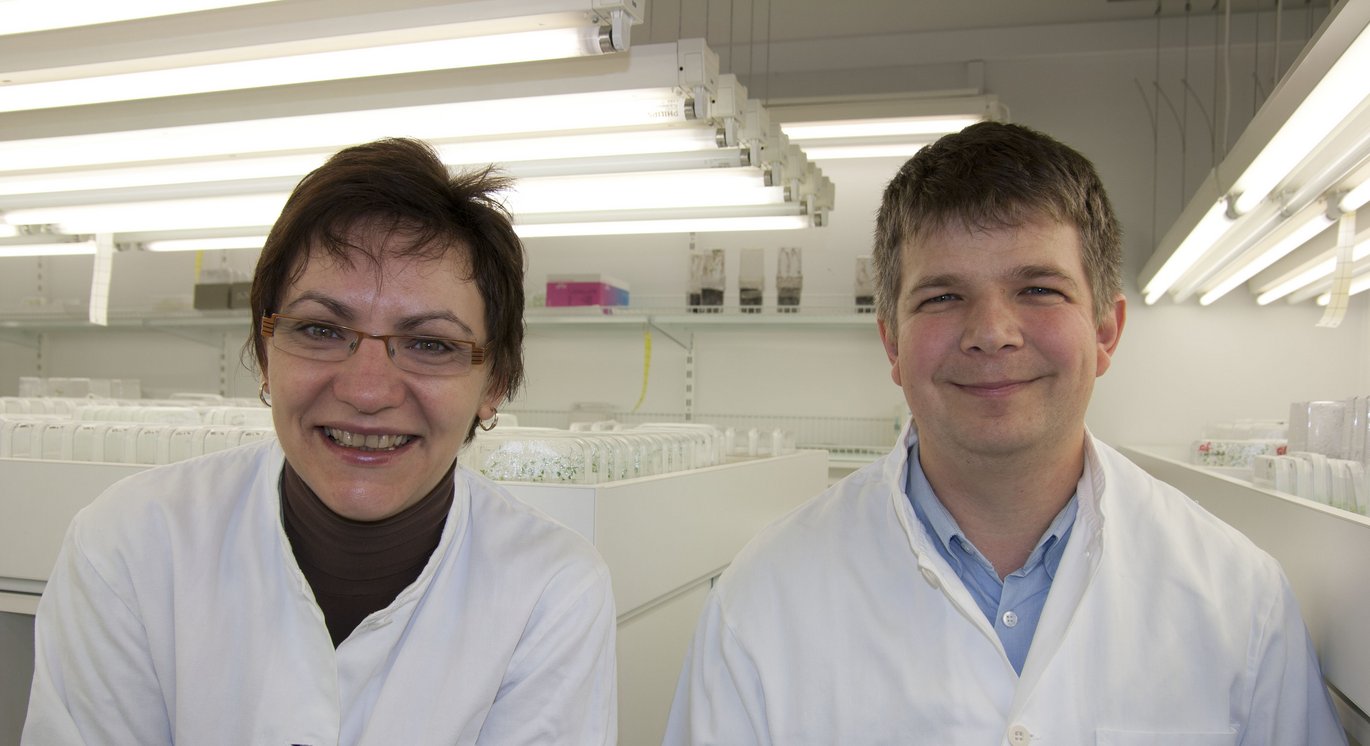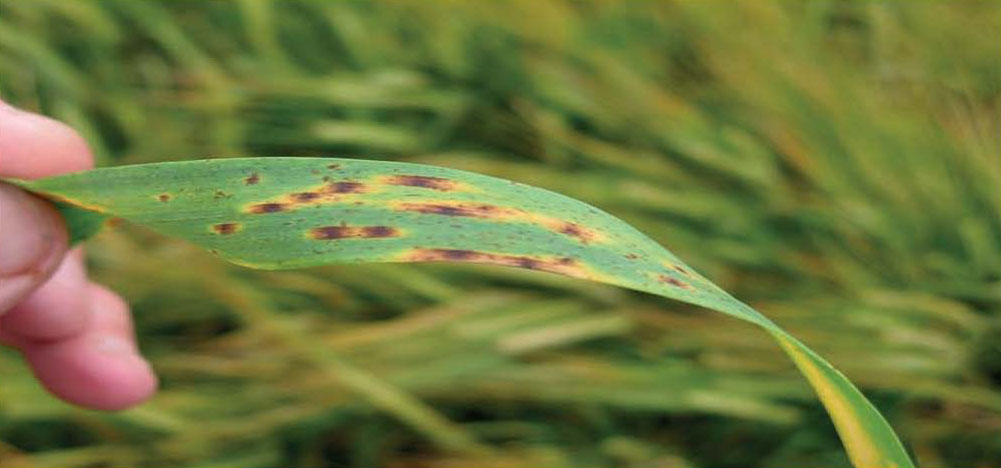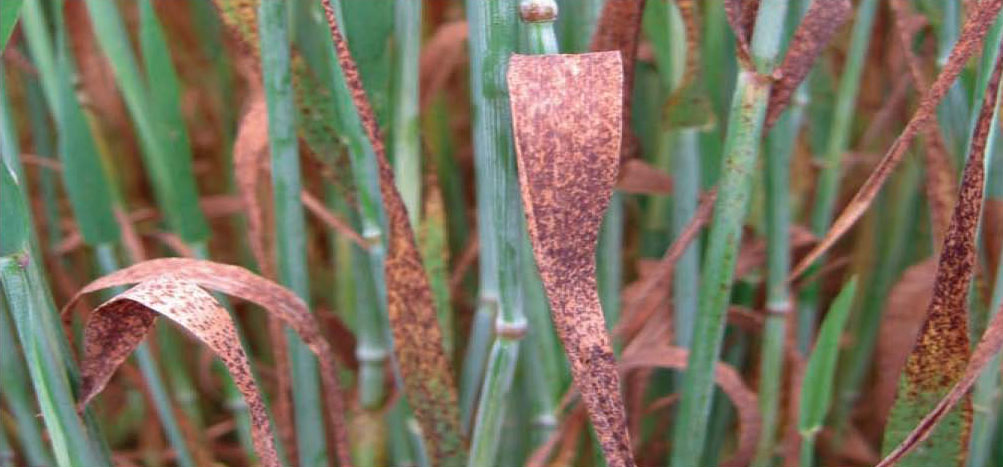Developing tools to combat fungi in barley
Fungal contamination of barley crops can cause reduced yields due to the disease leaf spot. A team of Danish and Scottish researchers will now develop tools to breed resistant varieties of barley and provide an early diagnosis of outbreaks so the disease can be reduced or eliminated. The Danish Council for Strategic Research has just granted Associate Professor Simona Radutoiu DKK 15.2 million for the project.



Ramularia leaf spot (RLS) is a relatively new disease in barley and is caused by a fungus called Ramulariacollo-cygni (Rcc). The disease has been observed to an increasing extent all over the world in recent years, and widespread infestation was found in Denmark for the first time in 2002.
Symptoms of infestation can be seen on the leaves as dark-brown spots surrounded by a yellowish area. The disease also attacks barley straw, ears and awns in both spring and winter crops. The fungus produces many small spores that can easily be spread by the wind. If efforts are not made to combat the disease, there is a potential risk of ramularia leaf spot becoming widespread.
In the affected areas, the fungus can reduce crop yields by up to 35%, which obviously results in considerable economic loss for agriculture. Annual production of barley in Denmark amounts to approximately DKK 5.8 billion and, at worst, ramularia leaf spot can lead to significant financial losses per year.
There is limited knowledge about options for combating the disease. Fungicides can be used to a certain extent, although this has only led to limited yield increase in general.
Ramularia collo-cygni lives inside the plant without doing any damage (called the endophyte stage), but later in its development, the fungus changes from an endophyte to a pathogen (disease-promoting microorganism), and the leaf spot symptoms become visible.
Because the pathogenic stage of the fungus occurs late in the growth phase, farmers have currently been unable to prevent reduced crop yields, apart from using fungicides.
The best way to combat the disease appears to be by developing barley varieties with increased resistance to the pathogenic form of the fungus via refinement. Until now, no barley plants have been found that are resistant to Ramularia collo-cygni.
Only a few studies of this fungus exist, and there is a lack of knowledge about the transition from the endophytic to the pathogenic stage. A team of Danish and Scottish researchers with leading international experts on both plants and microbes has therefore decided to study this transition from a molecular biology and genetics point of view with a view to developing tools that can be used to develop barley varieties that are resistant to the pathogenic form of Rcc.
Intervention at an early stage
The research team’s hypothesis is that, if Rcc can be kept at the endophytic stage, it will be possible to prevent outbreaks of the disease and thereby maintain high crop yields. In addition, the researchers aim to develop an efficient method to diagnose the disease at an early stage. Both resistant barley varieties and early diagnosis will have considerable economic importance for agriculture.
By applying molecular, genetic and biological knowledge, the team of researchers will develop DNA markers that can be used for both breeding new barley varieties and predicting potential outbreaks of the disease. This will form the basis for selecting plants with improved resistance to ramularia leaf spot.
Because all plants have endophytes, it is important to study and find the mechanisms that make some of them change their interaction with the host and become pathogens. This could have major importance for the general understanding and possible combat of new diseases in other plants.
The Danish Council for Strategic Research has just awarded a grant of DKK 15.2 million to Associate Professor Simona Radutoiu, Department of Molecular Biology and Genetics, Aarhus University, for the five-year project entitled: BRCC – Restricting the pathogenic effect on barley of the endophytic fungus Ramularia collo?cygni.
The other participants in the research project come from the University of Copenhagen, The James Hutton Institute, Scotland’s Rural College (SRUC ) and Sejet Plant Breeding I/S.
For more information, please contact
Associate Professor Elena Simona Radutoiu
Department of Molecular Biology and Genetics, Aarhus University, Denmark
sir@mb.au.dk, +45 8715 5498
